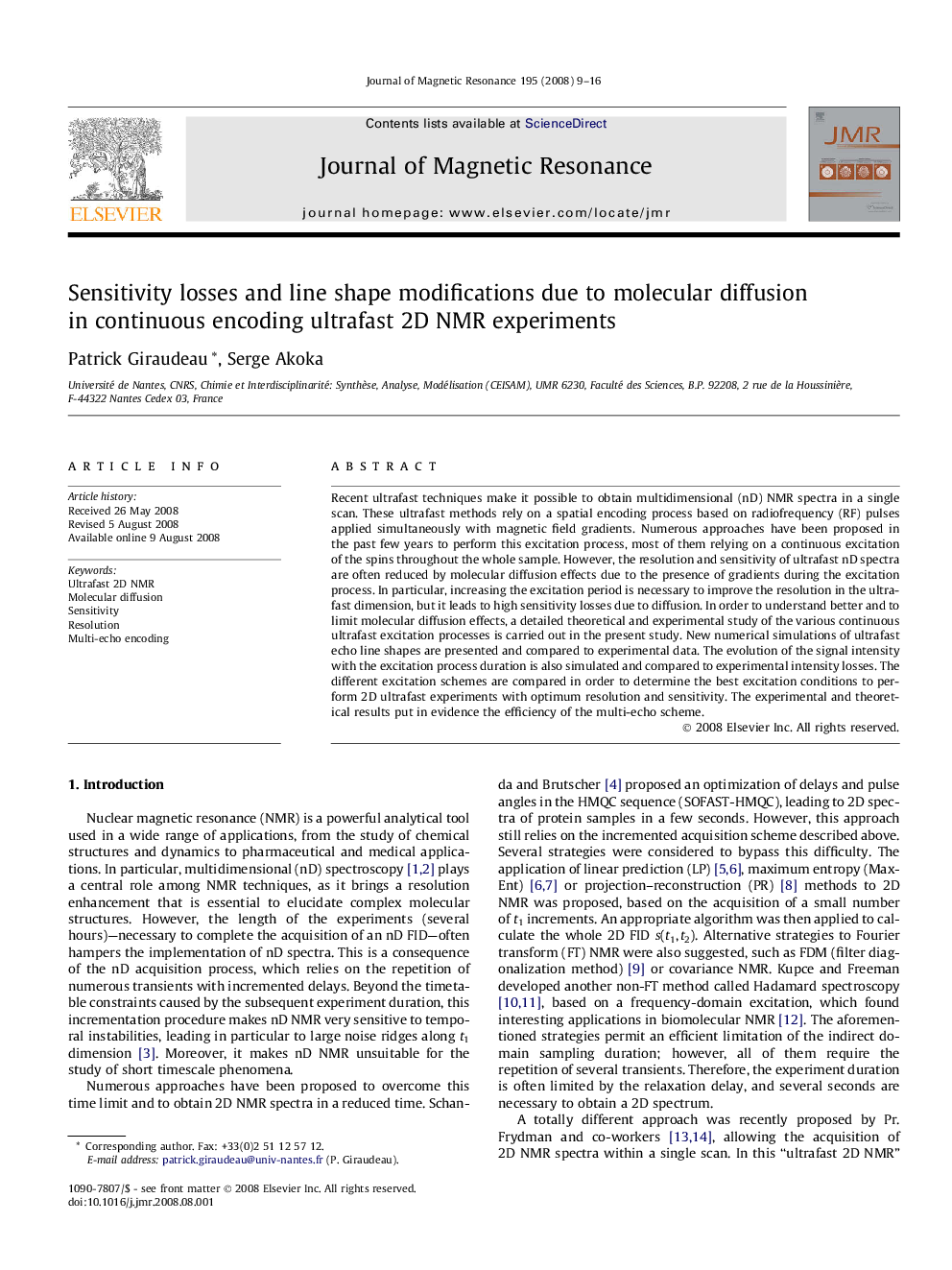| Article ID | Journal | Published Year | Pages | File Type |
|---|---|---|---|---|
| 5407083 | Journal of Magnetic Resonance | 2008 | 8 Pages |
Abstract
Recent ultrafast techniques make it possible to obtain multidimensional (nD) NMR spectra in a single scan. These ultrafast methods rely on a spatial encoding process based on radiofrequency (RF) pulses applied simultaneously with magnetic field gradients. Numerous approaches have been proposed in the past few years to perform this excitation process, most of them relying on a continuous excitation of the spins throughout the whole sample. However, the resolution and sensitivity of ultrafast nD spectra are often reduced by molecular diffusion effects due to the presence of gradients during the excitation process. In particular, increasing the excitation period is necessary to improve the resolution in the ultrafast dimension, but it leads to high sensitivity losses due to diffusion. In order to understand better and to limit molecular diffusion effects, a detailed theoretical and experimental study of the various continuous ultrafast excitation processes is carried out in the present study. New numerical simulations of ultrafast echo line shapes are presented and compared to experimental data. The evolution of the signal intensity with the excitation process duration is also simulated and compared to experimental intensity losses. The different excitation schemes are compared in order to determine the best excitation conditions to perform 2D ultrafast experiments with optimum resolution and sensitivity. The experimental and theoretical results put in evidence the efficiency of the multi-echo scheme.
Related Topics
Physical Sciences and Engineering
Chemistry
Physical and Theoretical Chemistry
Authors
Patrick Giraudeau, Serge Akoka,
